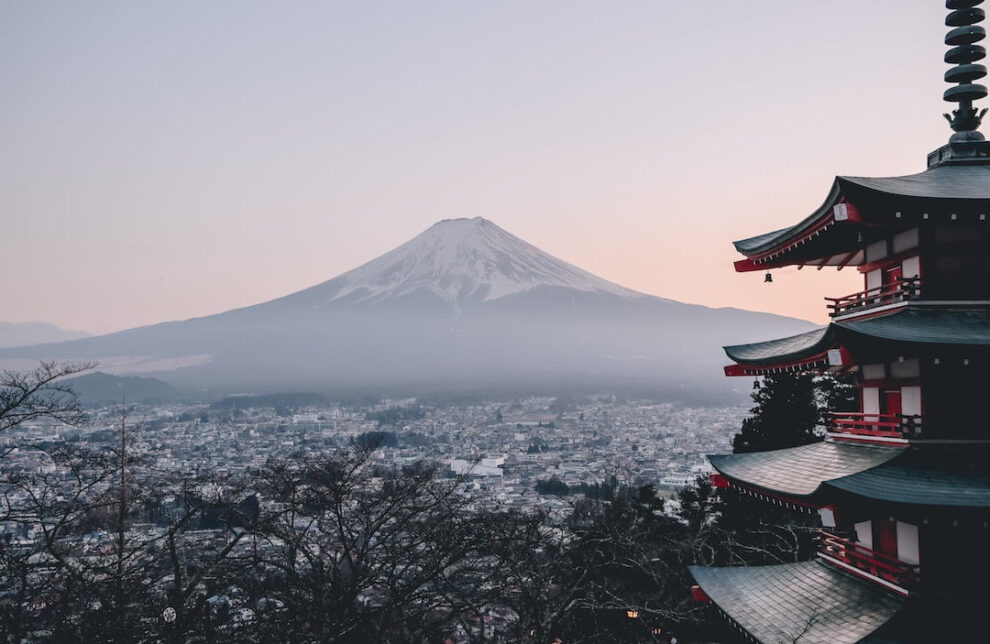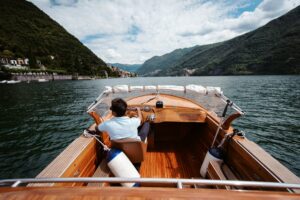At the easterly side of East Asia, Japan and South Korea are perennial favorites of savvy travelers – and for good reason.
But if you had to choose just one (we’re sorry), which one would get the nod? Below, two of our regular writers on the region make the case for their favorite
It’s just Japan
Regular Japan visitor and rail expert John Walton expounds on the many ways – both fast and slow – to explore his favorite country to visit. His top Japanese journeys include following rural rail lines up to relaxing hot spring towns and exploring local foodways.
I’ve traveled in both Japan and South Korea, and both are wonderful. Yet the former is the country I return to again and again.
Japanese trains are irresistible
The incredible railway network that blankets all of Japan is one of the country’s top draws – and wins out over South Korea’s trains, which I’ve also taken. Even with its recent price hikes, the Japan Rail Pass offers a fabulous value for shuttling between cities at up to 200mph (320km/h), relaxing on a comfortable Limited Express, exploring tiny local branch lines or enjoying cultural experience on the special Joyful Train excursion services.
If I had to pick a few favorite train trips, I’d go with the Tohoku Shinkansen’s top-speed section north of Omiya, the single-car branch line between Abashiri and Kushiro in Hokkaido, the Limited Express Yakumo from Okayama to Matsue and the SL Ginga steam trains from Takasaki.
A country for all seasons
Japan is several times the size of South Korea, and crosses a lot more climatic zones – from tropical Okinawa to the northern island of Hokkaido, snowy in winter but delightfully cool in summer.
This means there’s not only simply more to do, but that there’s more variety, as well as a wider range of seasons of pleasant weather.
Since I’m no great fan of the rain and humidity of the tsuyu early-summer season, I’ll head north to Hokkaido then, where the temperatures are balmy but not muggy, to enjoy the freshest of fish in historical Hakodate. Come autumn, I love to head southwest to Kyūshū to extend short-sleeve weather: Kumamoto and Kagoshima are delightfully sunny and warm even into late November.
Relaxing ryokan and onsen culture
Formal appearances can be deceiving: Japanese people love to relax, and they’re great at it. They’re also excited to share their traditions with visitors. Traditional ryokan hotels, especially those with attached onsen hot-spring baths, provide the perfect way to build intensive relaxation time into your trip.
From the moment I arrive at a ryokan, my worries melt away and all I have to think about is what book I want to read sitting by the scenic window in my room. In a picturesque onsen town I fancy going for a little wander in a yukata robe as I ponder which of the often multiple onsen baths I want to slip into to soak away my cares (and relieve my sore traveler muscles). Gunma’s Kusatsu-Onsen is famous for a reason, yet tiny Bessho Onsen near Ueda in Nagano – up the side of a mountain reached by a tiny private railway – is my favorite hidden gem.
Thousands of onsen can be found around Japan, from the famously beautiful one in Matsuyama that inspired Miyazaki’s Spirited Away to the one inside the railway station at Echigo-Yuzawa. I love dipping my tired toes into one of the stone public foot baths that you’ll find in many tourist areas.
Hiking, skiing and nature
An antidote to a very urbanized society, Japan’s outdoor activities are many and widespread. Once you get out of Japan’s cities, the natural beauty is a stunning surprise – accessible by both Shinkansen and local trains. Hiking is incredibly popular, while so many people love skiing that there is a special seasonal spur of a Shinkansen bullet train line that goes directly to the Gala Yuzawa ski resort.
Don’t miss the gorgeous Sanriku Coast in the Tohoku region, with its rugged yet human-scaled peninsulas and promontories. Rugby-loving Kamaishi or sleepy Miyako, with its stunning Jōdogahama Beach, are great starting points for exploring this region.
If you’re interested in it, Japan has it.
South Korea takes the crown
Tom O’Malley has ventured both north and south of Korea’s DMZ, and worked on the current editions of the Korea and Seoul Lonely Planet guidebooks. His favorite Korean dish is sundubu-jjigae (spicy tofu, pork and kimchi stew).
For this throw down of east versus slightly more east, I’m fighting in the K-corner – though in full disclosure I really love Japan, too. Still, in the spirit of partisanship, here’s my take on why South Korea deserves to be your next adventure destination.
The “It” culture
First, a question: how far would you have gotten in Squid Game? I reckon I’d have made it past the terrifying giant doll and then died trying to nibble the dalgona (sugar candy biscuit) without it breaking. The fact that you almost certainly know what I’m on about illustrates something: Korean culture is crushing it right now. From Bong Joon-ho’s Parasite winning Best Picture at the Oscars to girl group Blackpink blowing up Coachella, the world can’t get enough of South Korea. It’s a phenomenon dubbed hallyu (the “Korean Wave”), and it’s been building for years.
If you had the chance to time travel back to Belle Époque Paris, say, or London in the swinging ’60s, you’d go, right? Japan peaked in the 1980s before the bubble burst, yet South Korea’s golden age is happening right now. Why not go and be a part of it?
I appreciate that’s all a bit abstract, so let’s go head-to-head, starting with size. Japan is almost four times bigger than South Korea. And while there’s arguably more to see in Japan overall, that’s part of the problem. Itinerary planning is a headache, and getting around is expensive.
No such worries apply in South Korea, however. You can travel the length of the country – from the electric capital Seoul to the bustling southern port city of Busan – in just a couple of hours by high-speed train, with side forays to any number of incredible places, like the ancient tombs and temples of Gyeongju, or the dreamy peaks and waterfalls of Seograksan National Park. Or why not venture right to the edge of North Korea with a trip to the DMZ?
Fiery flavors
And then there’s the food, to my mind always one of travel’s chief pleasures. Japanese cuisine is elegant, subtle and often…well, raw. Are those really the best food adjectives? Personally, I want my meals to slap me around the face with flavor, heat and spice – and that’s exactly what you get from Korean cuisine.
Whether you’re cooking up galbi (beef short ribs) on a tabletop grill, going hard on chimaek (fried chicken and beer) or slurping down a fiery kimchi-and-pork stew, eating is a hearty, visceral pleasure in Korea. And a word about banchan, those little side dishes of delicious treats you get with most meals: they’re both free and refillable. What’s not to love?
Delightful people
A final word has to go to the true highlight of any trip to South Korea: the Korean people themselves. It’s as if hospitality, helpfulness and respect are hard-wired into their DNA. You can guarantee that as you travel through the country, you’ll have encounters with locals that will leave you feeling that little bit more positive about this planet we all share.
Sure, it could happen in Japan as well, but they’re probably too busy reading manga.
South Korea for the win.
Source: lonelyplanet









